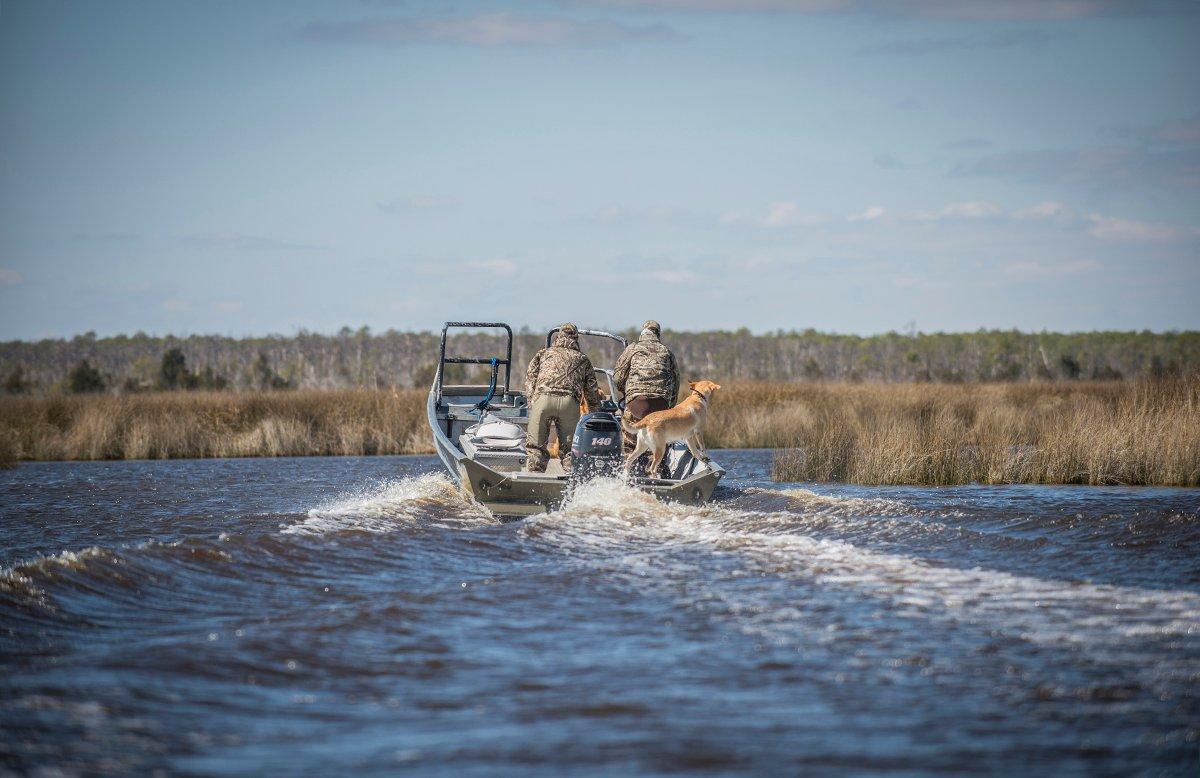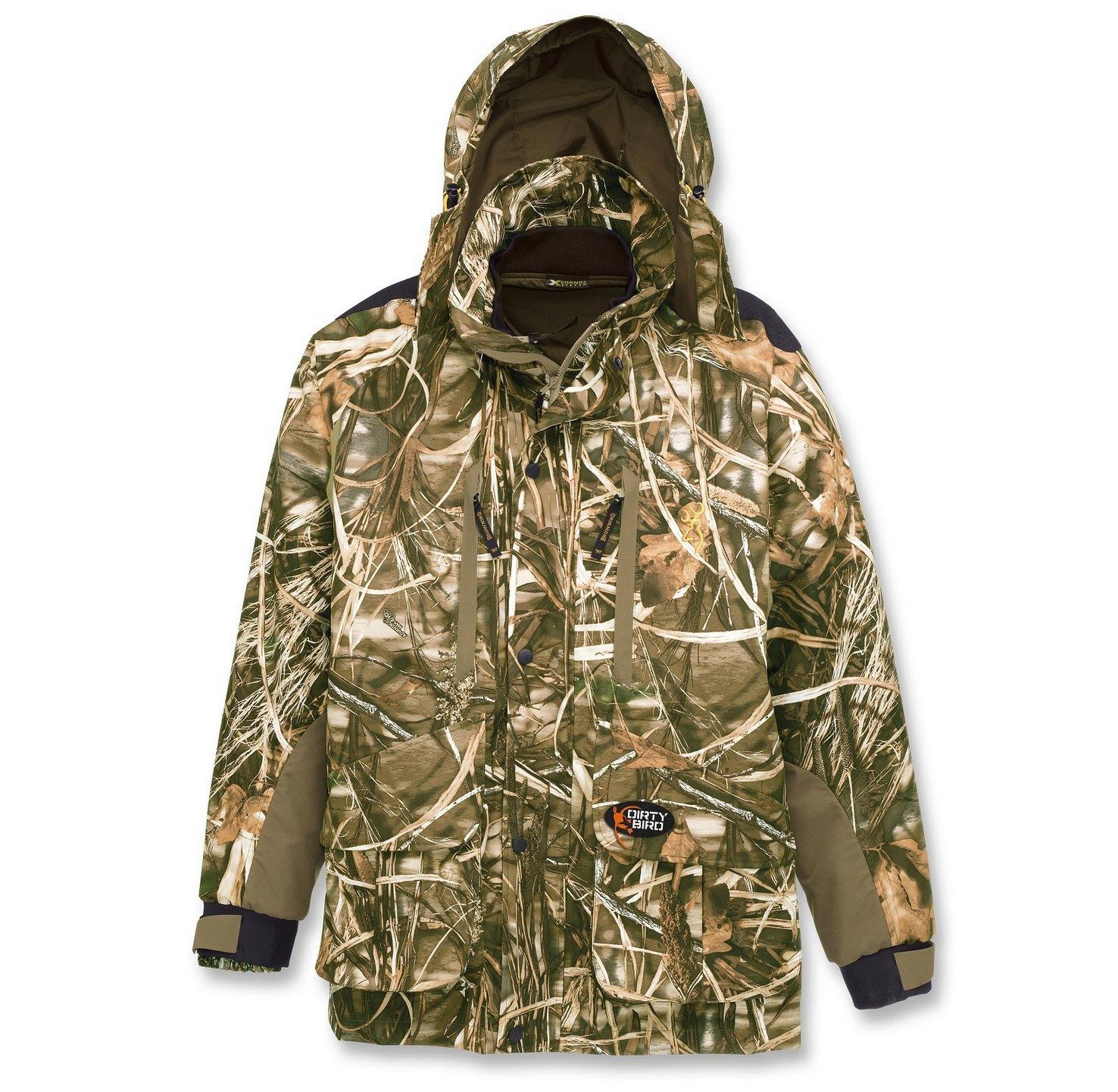Gear, preparation are critical for cashing in
Most duck hunters are landlubbers. They hunt marshes, backwaters, brakes, flooded fields, and green or dead flooded timber. These are wet places, sure, but they're land-based. The hunter is standing in shallow water or hunting from a boat or blind adjacent to or surrounded by shallow water.
But there's another kind of duck hunting … .
The nation's network of large rivers and the many flood-control and hydropower dams strung along them offer duck hunting that can, at times, be phenomenal, especially when the traditional shallow-water hotspots freeze solid.
These big waters are more common in the eastern half of the nation, but you can find big-water duck hunting from coast to coast. Like beavers, the Corps of Engineers never saw moving water it didn't want to dam, and there's also the Tennessee Valley Authority's network of lakes, plus a generous sprinkling of private, municipal and corporate public lakes scattered across the country.
Then there are the rivers, which are too numerous to list, but including notables such as the Missouri, Mississippi, Tennessee, White, Arkansas, Ohio, Red, Snake, Alabama and St. Lawrence. See? No shortage.
These big waters provide millions of acres of public hunting. No matter where you live, you're almost certainly within a day's drive of a good chunk of it. Yet most waterfowlers stick to the smaller, more traditional water and leave big water relatively untouched.
Part of it is the equipment. You don't need as much stuff to hunt small waters. Ease of access is another difference. It's usually easier to get to small-water hunting areas than big-water ones.
But the main reason is the same reason some anglers shun those same big waters. There's so much water, and it's intimidating and confusing. Where should you fish? Where should you set your decoys?
Look for Shelter
Usually, some common-sense detective work, in a boat or your den with a good set of maps or a good cyber-map program, can narrow the field considerably. A big-water hunting location needs two things: protection from the elements for the ducks and some sort of cover to hide hunters. Fortunately, you can often find these things in conjunction.
In lakes, look for broad, shallow bays or shallow flats at the back end of coves or on the sheltered side of points or islands, preferably bordered by a sand or mud bar, with enough nearby vegetation so you can blend in with your boat blind (or enough shoreline cover to hide an inconspicuous blind.) In rivers, a slight current is probably OK, but still water is better.
Another likely location is on main points that extend into a bend of the lake or river. Waterfowl often key on these places during normal flight, in much the same way doves key on single shade trees in pastures. When birds are on the move, pass shooting on points can be fantastic. If the point also provides shelter from the elements, it can be a good place for decoying ducks, too.
On many big waters, such places are relatively scarce, but that can be a good thing. This scarcity tends to concentrate waterfowl activity better and leads to more productive hunting when you find a suitable place.
Don't hesitate to pick up and move to a new location if the wind direction or waterfowl activity shifts. There's nothing to be gained by sitting in your dead spot watching ducks fall into a hidey-hole across the lake. If you can get to the place without crowding other hunters, do it. And do it fast, because things might change again.
Travel as Light as Possible
That need for sudden mobility is why it pays to minimize and simplify your equipment. For this style of hunting, a pop-up boat blind attached to the gunwales is a big advantage.
You can hide yourself and your boat under one of those camo leaf-flage type covers, but they get in the way when you're running the boat. Also, they get wet and uncomfortable, and they catch on almost everything — branches, gun barrels, boat corners — and are a general pain in the butt. A pop-up blind, such as those manufactured by Avery Outdoors and others, provides better concealment and protection from the elements. Plus, it goes up faster and isn't nearly as much in the way when it's not being used.
Whichever type of boat blind you choose, you need one badly for big-water hunting. Many likely hunting spots are shy on sufficient cover to hide a good-sized boat, and building a blind on-site takes considerable time.
Decoys are crucial for big-water hunting in most cases, but again, keep things simple. Six dozen decoys might make a bigger footprint, but a spread of three dozen takes half the time to deploy or retrieve. Motion decoys, although they occasionally make a difference, are usually not worth the trade-off in set-up and take-down time. Flagging at distant birds with white or black cloth is a good way to attract attention from distant birds, and it works well on ducks and geese.
A half-dozen full-bodied or shell Canada goose decoys are often worth the extra time and effort on many big waters, particularly bigger rivers such as the Mississippi, Missouri and Arkansas. These big birds favor the same kinds of sheltered areas you'll be hunting for ducks. Further, they act as confidence decoys, and they're easier to see at a distance.
Don't Neglect Calling
Calling is perhaps less important than effective decoy placement on big water, but it's still a plus. Ducks and geese are vocal, and if they don't hear at least some chatter coming from your spread, they'll be less likely to commit. And because good calling beats mediocre calling hands down, gaining some proficiency is a good idea.
Sometimes, the decoys alone are effective, but a combination of good decoy placement and decent calling almost always works better. Also, having several people call at the same time is almost always more effective than a single caller.
Floating Stock
You're almost certainly going to need a boat for big-water hunting, and big water calls for more boat than a farm pond. The run to your hunting spot is likely to be long, and you're apt to encounter rough water.
Therefore, a sturdy, seaworthy, wide-beamed, high-sided, shallow-draft boat is mandatory. At minimum, you'll need a 25-hp outboard, and a 40 or larger is better. Always wear a PFD when the boat is under power.
Maps of almost all large waters are available somewhere. Sniff out these sources, and get those maps. And go retro with actual paper maps. A wet smartphone won't work. All Corps of Engineers lakes have a resident engineer's office where maps are available, and district Corps of Engineers offices sell navigation maps for rivers such as the Mississippi, Arkansas and Ohio. Commercial maps for fishermen are also available at reasonable cost for many Corps of Engineers lakes.
One such company is Fishingmaps.com, 21869 Birchmont Lane, Nisswa, MN 56468; (218) 831-1058, www.fishingmaps.com. Or, you can always rely on good old topo maps. The point is, some type of map is vital to success and safety on big water.
Plan for Bad Weather and Rough Water
The weather doesn't have to be bad for big-water hunting to be good, but in general, the colder and nastier big water gets, the better the hunting. Those sheltered spots become a lot more appealing to waterfowl and waterfowl hunters.
Of course, such conditions can be extremely uncomfortable at best and life-threatening at worst, and it's axiomatic that you prepare for it beforehand. Even if you're beginning a hunt in mild weather, be prepared for bad stuff.
Browning 4-in-1 Dirty Bird Parka
While keeping that travel-light motto in mind, put together a kit in a water-tight plastic tote. Include such items as a cell phone, an extra compass, waterproof insulated mittens, a flare gun and flares, high-energy foods such as candy bars, waterproof matches and fire-starting stuff, heavy parka-style float coats with drawstring hoods and similar items. You might never need your kit, but if you need it, you're going to need it badly.
That's not meant to scare you away, but waterfowl hunting on big water is a lot different from hunting ducks in a flooded field or farm pond within sight of your vehicle. It can be dangerous if you're not prepared.
Mixed-Bag Hunting
Last but not least, it's a good idea to be up to speed on duck identification and bag regulations. Big water attracts a hodgepodge of species, and you never know what's going to come into the decoys next. In many areas, it's common to see a dozen species during a hunt, from common birds such as mallards and gadwalls to gee-whiz species such as longtails, goldeneyes and ruddy ducks.
After taking care of the stuff we've talked about, the only thing left to do is get out there and see what happens. Do it right, and it will add a new dimension to your waterfowling.
Click here for more Realtree waterfowl hunting content. And check us out on Facebook.








